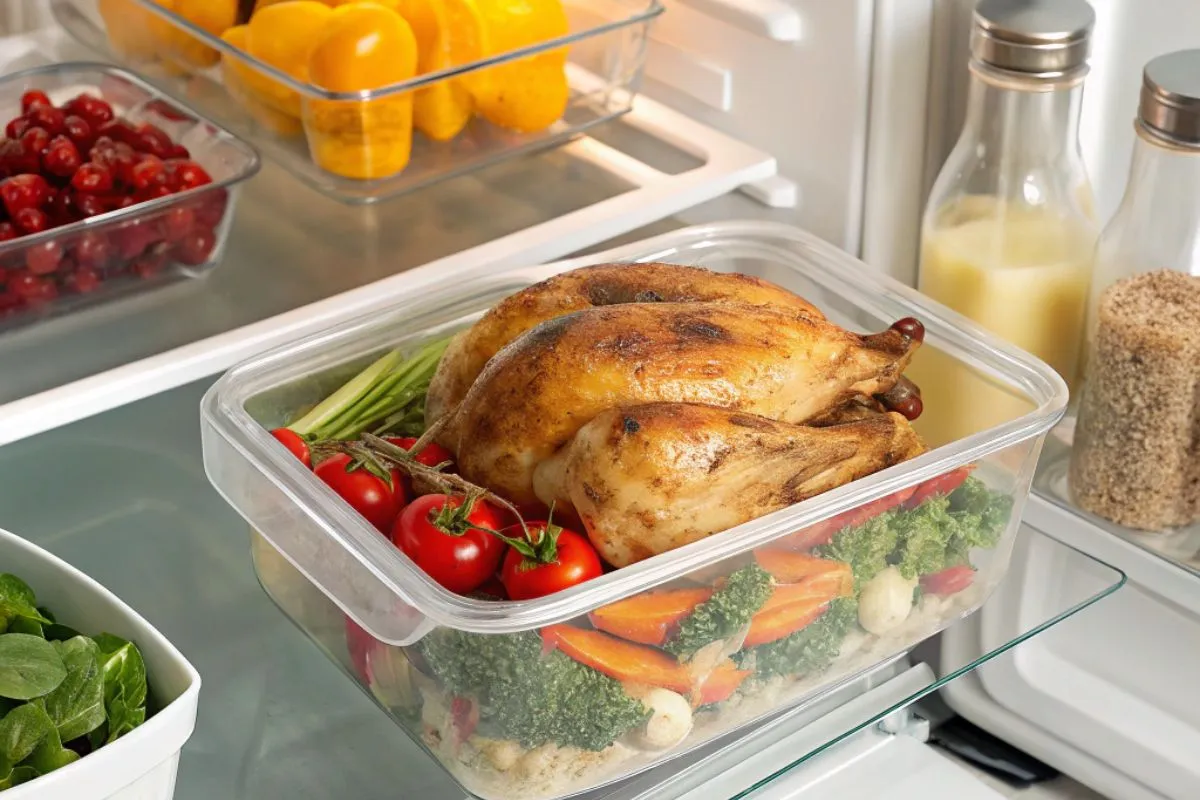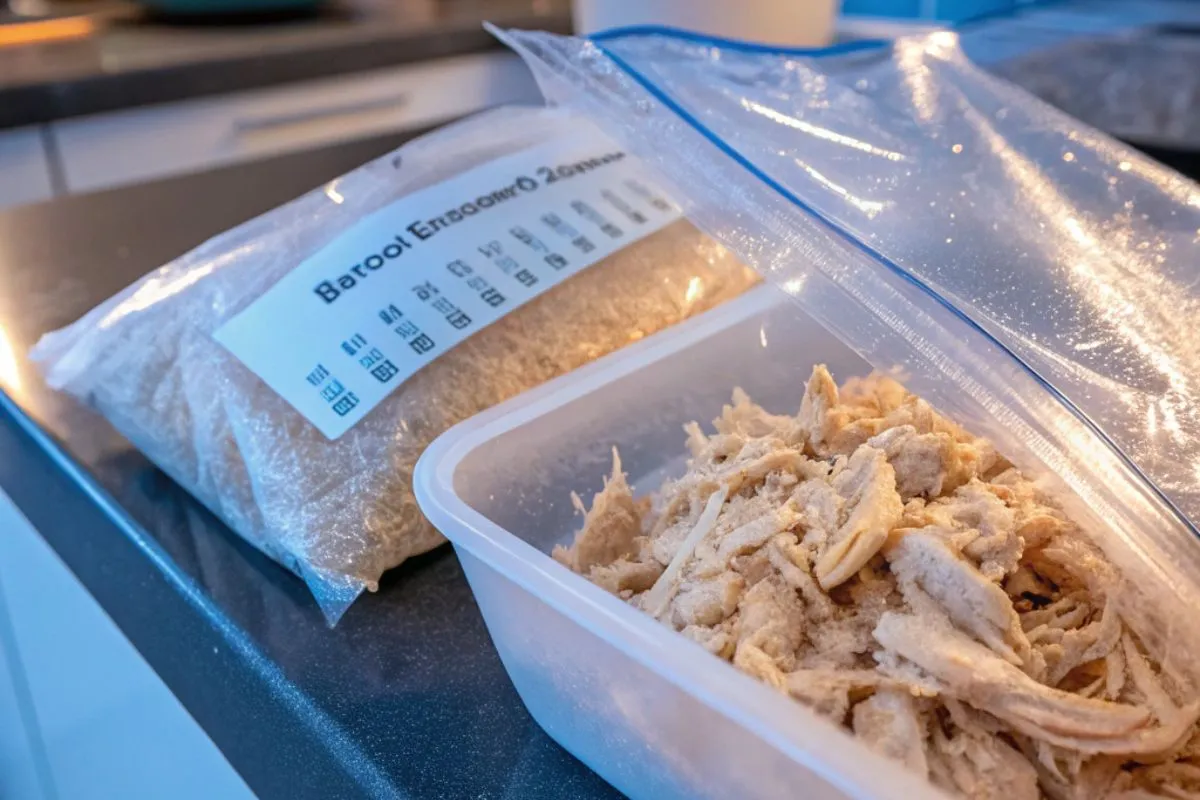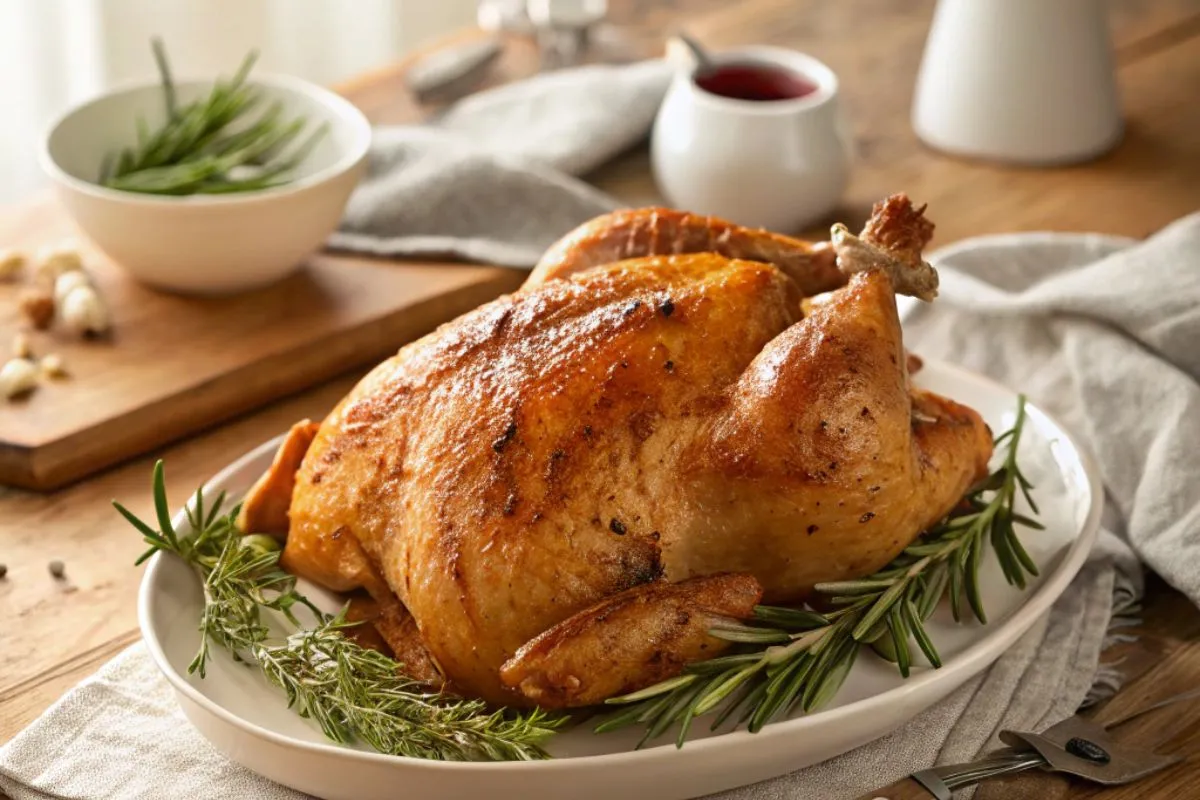Rotisserie chicken is a convenient, delicious option for busy weeknights or quick meals. Whether you’ve grabbed one from the grocery store or made it at home, knowing its shelf life is key to enjoying it safely. In this comprehensive guide, we’ll dive into everything you need to know about storing rotisserie chicken, from refrigeration to freezing, plus expert tips to keep it fresh and tasty.
How Long Is Rotisserie Chicken Good For? Understanding Shelf Life Basics

When you bring home a rotisserie chicken, timing matters. The clock starts ticking the moment it’s cooked, and proper storage determines how long it stays safe to eat. Let’s break it down step-by-step to ensure you’re maximizing freshness without risking food safety.
Rotisserie chicken, like any cooked poultry, is perishable. Temperature, storage methods, and even how it’s handled play a role in its longevity. Whether it’s sitting on your counter or tucked away in the fridge, understanding these factors helps you avoid waste and enjoy every bite.
Why Storage Matters for Rotisserie Chicken
Cooked chicken is a prime target for bacteria like Salmonella and Listeria if not stored correctly. The USDA recommends keeping perishable foods out of the “danger zone” (40°F to 140°F) for no more than two hours—or one hour if the room temperature exceeds 90°F. This rule applies to rotisserie chicken straight from the store or oven.
Ignoring these guidelines can lead to spoilage or foodborne illness. So, how long is rotisserie chicken good for once it’s in your hands? It depends on where and how you store it.
How Long Is Rotisserie Chicken Good For in the Refrigerator?

Refrigeration is the go-to for keeping rotisserie chicken fresh short-term. If you don’t plan to eat it right away, the fridge is your best friend. But there’s a limit to how long it stays safe.
The Refrigerator Rule: 3 to 4 Days
According to the USDA Food Safety and Inspection Service, cooked chicken, including rotisserie, is safe in the refrigerator at 40°F or below for 3 to 4 days. Beyond that, the risk of bacterial growth increases, even if it still looks or smells okay.
To make the most of this window:
- Store it in an airtight container or wrap it tightly in aluminum foil or plastic wrap.
- Place it on a lower shelf where the temperature is coldest.
- Avoid letting it sit out for too long before refrigerating.
Signs It’s Gone Bad
Not sure if your chicken is still good? Check for these red flags:
- A sour or off smell.
- Slimy texture on the meat.
- Discoloration, like gray or green patches.
If you spot any of these, toss it out—no exceptions.
Freezing Rotisserie Chicken: Extending Shelf Life
What if you can’t finish your rotisserie chicken within 4 days? Freezing is a game-changer. It locks in flavor and safety for months, making it perfect for meal prep or leftovers.
How Long Is Rotisserie Chicken Good For in the Freezer?
When stored at 0°F or below, rotisserie chicken can last up to 4 months in the freezer, per FDA guidelines. For the best quality, aim to eat it within 2 to 3 months—after that, it might lose some texture or taste, though it’s still safe.
Freezing Tips for Success
To freeze rotisserie chicken like a pro:
- Remove the meat from the bones to save space and make thawing easier.
- Use freezer-safe bags or containers to prevent freezer burn.
- Label with the date so you don’t lose track.
Thaw it in the fridge overnight when you’re ready to use it—never on the counter.
Room Temperature Risks: How Long Can It Sit Out?
Sometimes life gets busy, and that rotisserie chicken ends up on the counter longer than planned. But how long is too long?
The Two-Hour Rule
At room temperature (below 90°F), rotisserie chicken should not sit out for more than 2 hours. If it’s a hot day (above 90°F), cut that to 1 hour. After this, bacteria multiply rapidly, and the chicken becomes unsafe to eat.
If you’re serving it at a gathering, keep it warm in an oven or slow cooker at 165°F or higher. Otherwise, refrigerate it ASAP.
Reheating Rotisserie Chicken Safely
Reheating leftovers is a great way to enjoy rotisserie chicken later, but it must be done right to kill any bacteria that may have started growing.
Best Reheating Methods
- Oven: Preheat to 350°F, wrap the chicken in foil, and heat for 20-25 minutes until it reaches an internal temperature of 165°F.
- Microwave: Use a microwave-safe dish, cover it, and heat in short bursts, checking the temperature with a food thermometer.
Always ensure the chicken hits 165°F internally, as recommended by the CDC.
Creative Ways to Use Leftover Rotisserie Chicken
Got some chicken nearing its fridge deadline? Don’t let it go to waste! Here are a few ideas to repurpose it:
- Shred it for tacos or quesadillas.
- Toss it into a salad for a protein boost.
- Make a hearty chicken soup or stew.
These quick meals keep your leftovers exciting and safe to eat within the 3-4 day window.
Common Questions About Rotisserie Chicken Storage
Can You Eat It Cold?
Yes! As long as it’s been stored properly in the fridge, cold rotisserie chicken is perfectly safe straight from the container—no reheating required.
Does Store-Bought vs. Homemade Make a Difference?
Not really. The shelf life rules (3-4 days in the fridge, 4 months in the freezer) apply to both, assuming they’re handled and stored the same way.
What About the Bones?
Don’t toss those bones! Simmer them with water, veggies, and herbs to make a flavorful chicken stock. Store the stock in the fridge for up to 4 days or freeze it for 3 months.
Expert Tips to Maximize Freshness
Want to stretch your rotisserie chicken’s life without compromising quality? Try these pro tips:
- Divide it into smaller portions before storing to cool it faster and reduce bacterial risk.
- Use a vacuum sealer for freezing—it’s a game-changer for preventing freezer burn.
- Keep your fridge at 40°F or below and your freezer at 0°F—check with a thermometer for accuracy.
For more storage hacks, check out this guide from FoodSafety.gov.
Why Knowing Shelf Life Saves You Money and Hassle
Wasting food is frustrating—and expensive. The average American household throws out about $1,500 worth of food annually, according to the USDA. By mastering how long rotisserie chicken stays good, you’re cutting down on waste and keeping your grocery budget in check.
Plus, it’s peace of mind. No more guessing games or risky bites—just safe, delicious chicken every time.
Ingredients (for Homemade Rotisserie Chicken)
If you’re inspired to make your own rotisserie chicken, here’s a simple recipe to get started:
- 1 whole chicken (3-4 lbs)
- 2 tbsp olive oil
- 1 tsp salt
- 1 tsp black pepper
- 1 tsp paprika
- 1 tsp garlic powder
- 1 tsp dried thyme
Instructions: Rub the chicken with oil and spices, then cook in a rotisserie oven or air fryer at 375°F for 60-75 minutes, until the internal temperature reaches 165°F. Let it cool before storing.
Print
Rotisserie Chicken Salad: A Quick Meal Idea
Description
Use rotisserie chicken within 3-4 days for this fresh salad! Ready in 10 mins, it’s a healthy way to enjoy leftovers safely.
Ingredients
- 2 cups shredded rotisserie chicken (use within 3–4 days)
- 4 cups mixed greens (spinach, lettuce, or arugula)
- 1 cup cherry tomatoes, halved
- 1 cucumber, sliced
- 1/4 cup red onion, thinly sliced
- 1/4 cup olive oil
- 2 tbsp lemon juice
- 1 tsp Dijon mustard
- Salt and pepper to taste
Instructions
- Check your rotisserie chicken—make sure it’s been in the fridge for no more than 3-4 days. If it smells off or looks slimy, toss it out.
- In a large bowl, add the mixed greens, cherry tomatoes, cucumber, and red onion.
- Add the shredded rotisserie chicken on top.
- In a small bowl, whisk together olive oil, lemon juice, Dijon mustard, salt, and pepper to make the dressing.
- Pour the dressing over the salad and toss everything together.
- Serve immediately and enjoy your quick, healthy meal!
Notes
- Rotisserie chicken is good for 3-4 days in the fridge (40°F or below) or up to 4 months in the freezer (0°F). Always store it in an airtight container to keep it fresh.
- If your chicken is nearing the 4-day mark, this salad is a great way to use it up safely.
- For extra flavor, add crumbled feta cheese or a handful of nuts like almonds or walnuts.
FAQ:
Have questions about keeping your rotisserie chicken fresh and safe? We’ve got you covered with these frequently asked questions.
How long can rotisserie chicken sit out at room temperature?
Rotisserie chicken should not sit out for more than 2 hours at room temperature (below 90°F). If it’s hotter than 90°F, reduce that to 1 hour to prevent bacterial growth.
Can you freeze rotisserie chicken to extend its shelf life?
Yes! Freezing rotisserie chicken keeps it safe for up to 4 months. For the best flavor, use it within 2-3 months. Store it in freezer-safe bags or containers.
How can I tell if my rotisserie chicken has gone bad?
Look for a sour smell, slimy texture, or discoloration (gray or green spots). If you notice any of these, discard it immediately.
Is it safe to eat rotisserie chicken cold from the fridge?
Absolutely! As long as it’s been refrigerated properly within 3-4 days of cooking, you can enjoy it cold without reheating.
How long does rotisserie chicken last in the refrigerator?
Cooked rotisserie chicken stays good in the fridge at 40°F or below for 3 to 4 days. After that, it’s best to freeze it or toss it.
Can I reheat rotisserie chicken more than once?
It’s safest to reheat rotisserie chicken only once. Reheat it to an internal temperature of 165°F, and avoid repeated heating to minimize bacterial risks.
What’s the best way to store leftover rotisserie chicken?
Store leftovers in an airtight container or wrap them tightly in foil or plastic wrap. For longer storage, freeze the meat in labeled, freezer-safe bags.
Does store-bought rotisserie chicken have a different shelf life than homemade?
No, both store-bought and homemade rotisserie chicken follow th
Conclusion: Master Your Rotisserie Chicken Storage
Knowing how long rotisserie chicken stays fresh is the key to enjoying it safely and reducing waste. Stick to 3-4 days in the fridge or stretch it to 4 months in the freezer with proper care. By using airtight containers, smart reheating, and creative recipes, you’ll keep every bite delicious and safe. Next time you grab that golden bird, store it like a pro and savor it worry-free—your wallet and taste buds will thank you!

